May 22, 2025 | 04:42 GMT +7
May 22, 2025 | 04:42 GMT +7
Hotline: 0913.378.918
May 22, 2025 | 04:42 GMT +7
Hotline: 0913.378.918
A visit to evaluate the biomass maize production model under the project "Building a model of biomass maize production as green feed for cattle” has been conducted by the Maize Research Institute under the Vietnam Academy of Agricultural Sciences.
The evaluation of the model was attended by experts, local authorities, cooperatives and a large number of villagers in Co Do Commune in Hanoi’s Ba Vi District.
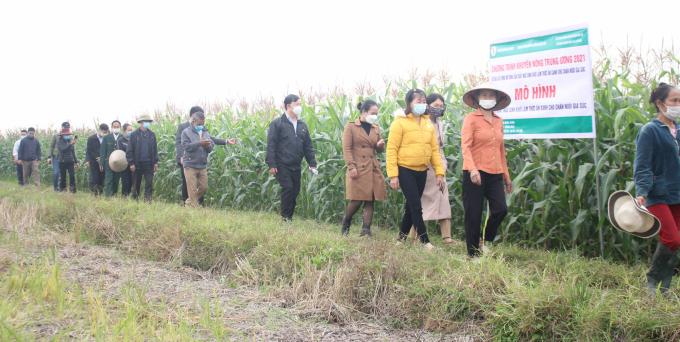
Many villagers in Co Do Commune visited and highly appreciated the model of cultivating biomass maize variety VN172 on two-crop paddy fields in the winter of 2021. Photo: Trung Quan.
The model is jointly implemented by the National Agricultural Extension Center (NAEC) and the Maize Research Institute within the central agricultural extension program in 2021. It has been deployed in the winter 2021 crop on a total area of 10 hectares of 2-crop paddy fields in Co Do Commune, using the biomass maize variety VN172 selected and bred by the Maize Research Institute.
Farmers participating in the model are supported with 100% of seeds, 50% of fertilizer costs, while being trained and guided in biomass maize cultivation techniques.
According to Vuong Huy Minh, Deputy Director of the Maize Research Institute, VN172 is a specialized biomass maize variety in the production of forage for livestock, recognized by the Ministry of Agriculture and Rural Development and allowed for trial production.
The deployment of the model aims to evaluate the adaptability and economic efficiency of this maize variety on 2-crop paddy fields, becoming a basis for expanding the area to other provinces in the Red River Delta in the following years.
The Deputy Director added that models of biomass maize production using VN172 variety have been conducted in many provinces and cities and on many different paddy fields However, this is the first time this maize variety has been planted on 2-crop soil.
Despite the prolonged rainy season in the first period, causing many difficulties for sowing and negative effects on the seedlings, the biomass maize variety VN172, with its outstanding characteristics, has quickly recovered and developed well. Currently, the maizes are at the stage of producing flowers while in some areas, maizes have had flowers for one week.
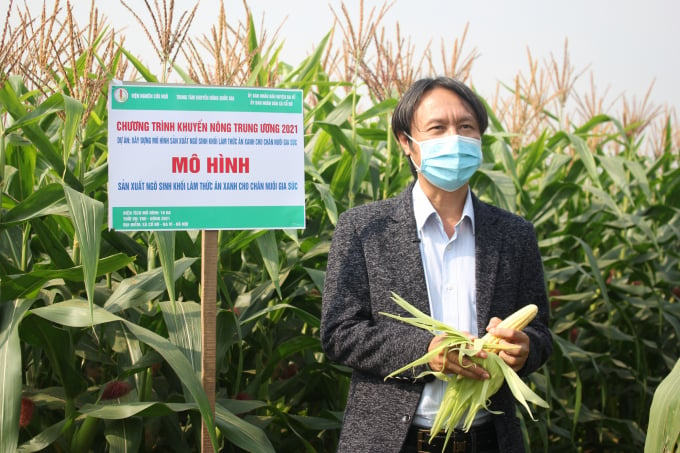
Vuong Huy Minh, Deputy Director of the Maize Research Institute, annouces the results obtained in the model. Photo: Trung Quan.
The accumulated data show that the biomass maize variety VN172 grown in the model fully meets the standards of its variety such as: Good growth and development; a high percentage of green leaves until harvest; resistance to high density (7 thousand trees/ha); being less susceptible to diseases such as large leaf spot, dry streak, stem rot; anti-cold, good anti-dumping; good corn grain ability, while ensuring high nutritional content when used animal feed. Yield is expected to reach 50 - 52 tons/ha.
According to Vu Thi Thanh Hoa, Deputy Director of Co Do Village Cooperative, Co Do Commune, Ba Vi, a cooperative participating in the model, villagers of Co Do Commune in general and cooperative members in particular raise cow in large quantity, leading to high demand for green, nutritious forage, especially in the cold winter period. Therefore villagers have been enthusiastically participated in the implementation of the model.
The participating households have been guided and trained by the Maize Research Institute on the unified technical process beforehand so the model has been implemented effectively.
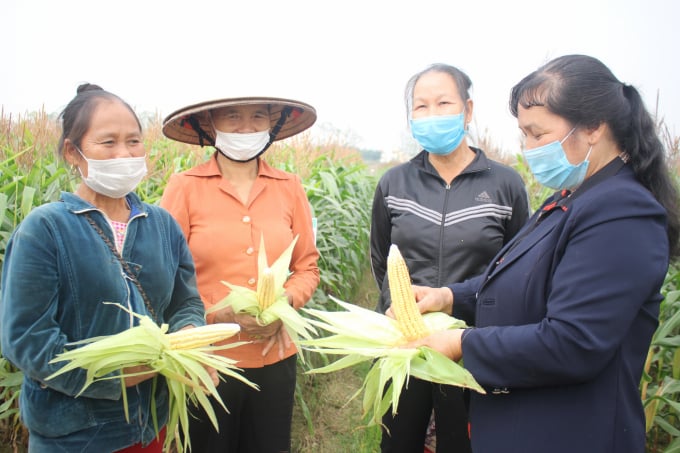
Vu Thi Thanh Hoa (right), Deputy Director of Co Do village cooperative, is pictured with households participating in the model. Photo: Trung Quan.
Basically, the cultivation process of the VN172 variety is not much different from that of the previous maize varieties that locals used to grow. Moreover, the specialists have provided careful, understandable and approachable guidance so its cultivation could be implemented immediately.
Hoa added that the VN172 variety has demonstrated good waterlogging tolerance and fast nutrient absorption after heavy rains at the beginning of the crop. After 3-5 days of rain, the plants quickly have recovered, leaving no effect on the crop and yield.
Regarding consumption, a number of large cattle raising companies and farms in the vicinity have raised the issue of purchasing the output, she added.
However, the pilot crop of the new variety planted on a small scale has produced limited output which is only sufficient for household uses.
"Based on the results obtained, the cooperative will promote links among businesses, farms, and cattle farms in the next crops to expand the cultivating area and therefore increase income for the people," Hoa said.
Nguyen Quoc Tuy from Co Do Village said that his 2.5 acres of VN172 biomass maize were assumed to be spoiled after constant heavy rains; however, the maizes have quickly recovered and grown well. They could be ready for harvest in the next 15 days and silage for dairy cows until April next year.
"Variety of VN172 could grow at high density with good uniformity. Common diseases on maize such as mold on the leaf sheaths have been rarely found and the yield will certainly be higher than conventional maize varieties,” he said.
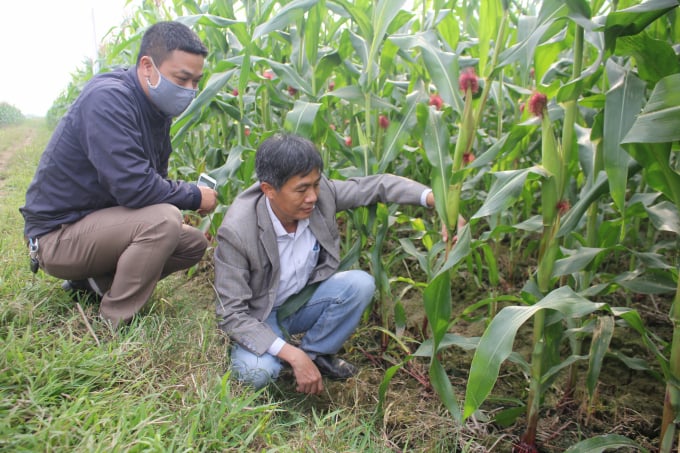
The staff of the Maize Research Institute check the growth rate of the plant and give recommendations to the farmers prior to the harvest period. Photo: Trung Quan.
Tuy also expressed his wish that management agencies at all levels, scientists and businesses would come up with specific policies to support people to grow biomass maize.
“Local authorities need to develop planning and concentrated planting areas so that people can easily apply mechanization. Scientists help to provide knowledge and accompany people to solve technical problems, prevent pests... Enterprises create a joint venture mechanism, closely linking with the producers and consumers," he added.
Translated by Phuong Ha
![Reducing emissions from rice fields: [2] Farmers’ commitment to the soil](https://t.ex-cdn.com/nongnghiepmoitruong.vn/608w/files/news/2025/05/05/dsc08881jpg-nongnghiep-140632.jpg)
(VAN) Clean rice cultivation model in Thuong Tan commune, Bac Tan Uyen district, is assisting local residents in achieving sustainable agriculture by substantially reducing costs, increasing productivity, and protecting the environment.

(VAN) At the conference to disseminate Resolution No. 68, AgriS introduced its digital agricultural ecosystem and reaffirmed its commitment to accompanying the Government in promoting private sector development and sustainable agriculture.

(VAN) 'Blue Ocean - Blue Foods' initiative is designed to restore marine ecosystems and establish sustainable livelihoods for local communities by cultivating a minimum of 1,000 hectares of cottonii seaweed in the first three years.
/2025/05/21/4642-3-112707_603.jpg)
(VAN) The V-SCOPE project has made direct contributions to three out of six pillars of the Comprehensive Strategic Partnership between Vietnam and Australia.
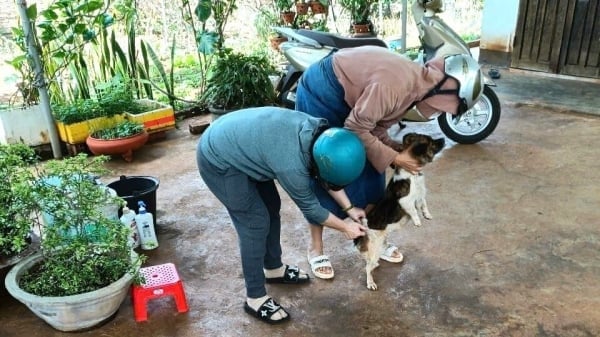
(VAN) Facing the threat of rabies spreading to the community, Gia Lai province urgently carries out measures to vaccinate dogs and cats on a large scale.
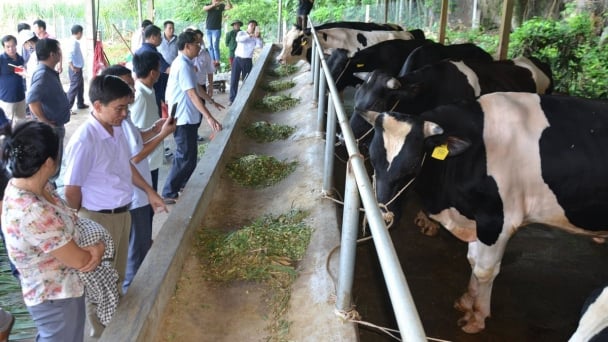
(VAN) Disease-free livestock farming not only protects livestock herds but also stabilizes production and livelihoods for many farmers in Tuyen Quang.
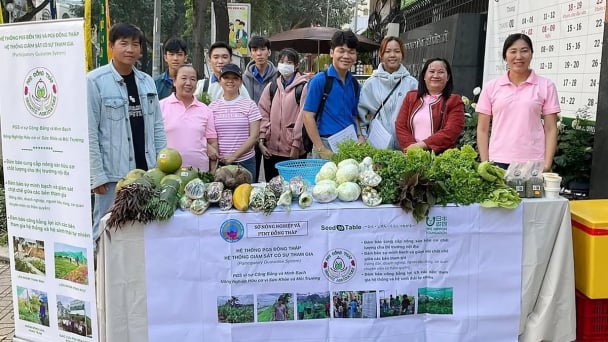
(VAN) Japan's grant aid project contributes to capacity building, promoting organic agricultural production, and fostering sustainable community development in Dong Thap province.